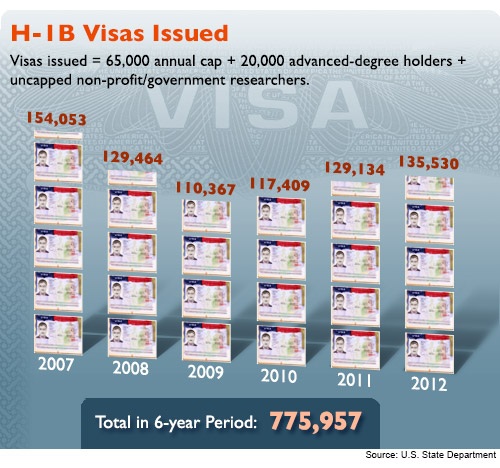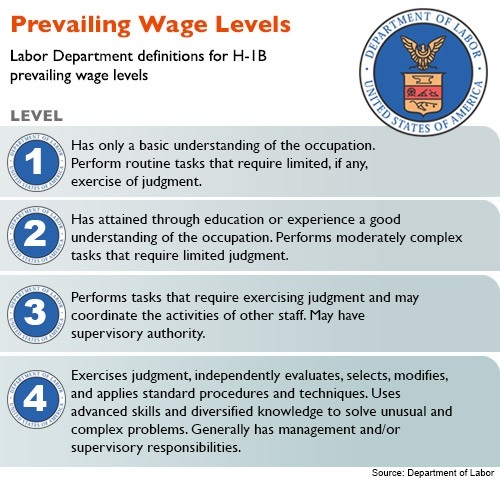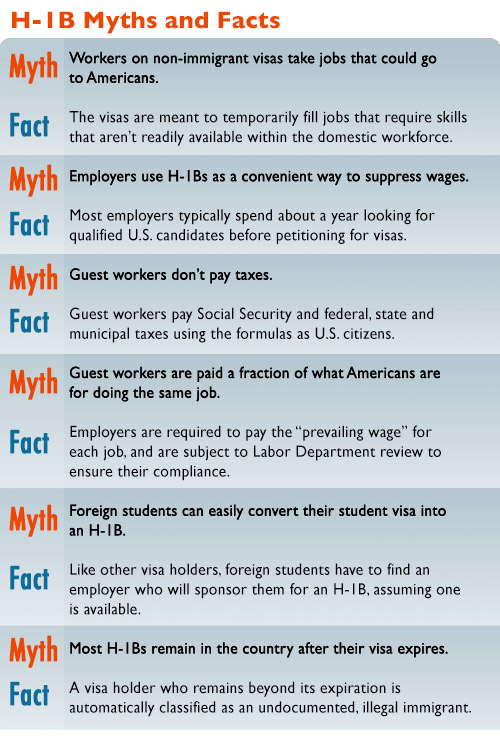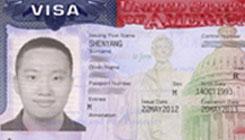Here’s where it starts: Employers say there’s a lack of tech professionals who have the skills they need to compete in today’s increasingly technology-driven global markets. They can’t find computer systems analysts, programmers and software applications engineers, especially with advanced degrees. Without these skills, they contend, they’re at a disadvantage. But by hiring professionals from other countries, who are more than willing to bring their talents to the United States, they can solve the problem.  But American tech workers don’t buy it. The motivations behind the corporate push are all about suppressing wages, they charge. Plenty of experienced native-born professionals are available to do the work, right now, especially if Corporate America would spend the money to train them. Guest workers do the same work for less money, they argue. And, they contend, the claim that visa holders provide the only solution gives companies an easy justification for easing out higher-paid tech veterans. While each side has valid arguments to make, too often the debate isn’t so much a discussion as a screaming match. So let’s look at the realities, without the emotion. The Special Report:
But American tech workers don’t buy it. The motivations behind the corporate push are all about suppressing wages, they charge. Plenty of experienced native-born professionals are available to do the work, right now, especially if Corporate America would spend the money to train them. Guest workers do the same work for less money, they argue. And, they contend, the claim that visa holders provide the only solution gives companies an easy justification for easing out higher-paid tech veterans. While each side has valid arguments to make, too often the debate isn’t so much a discussion as a screaming match. So let’s look at the realities, without the emotion. The Special Report:
- How 800,000 H-1B Workers Came to the U.S.
- The Picture in Washington
- Current Laws and Policies
- Programmers Guild: The American Worker Needs Protection
- Industry Group: More STEM Grads, But H-1B Reform, Too
- The Corporate Perspective: Intel’s Approach to H-1Bs
- The Opponent: H-1Bs Pressure U.S. Wages
- The Economist: H-1Bs Are Important to the Economy
- A Guest Worker’s Perspective on H-1Bs
The Numbers Over the past six years, 775,957 H-1B visas were issued to foreign workers, according to the State Department, which is the last of three federal agencies to approve each successful petition. Since the visas can be valid for that long, that's the number of H-1B workers who could be in the U.S. today. That’s more than the much-publicized annual cap of 65,000 for a simple reason: Each visa is good for a three-year period and can be extended for another three years under certain circumstances. Thus the cap is only a part of the story. After Congress created the H-1B visa in 1990, demand skyrocketed during the dot-com boom that came late in the decade. Since then, employers have come to rely on visa holders as a key source of highly skilled technical talent. Indeed, one company — the Sunnyvale, Calif., startup Blueseed, wants to convert a cruise ship into a floating incubator moored 12 miles off the coast of Northern California, beyond U.S. jurisdiction — and any visa caps. Industry advocates say the program isn’t about displacing U.S. citizens but supplementing them with professionals who have the skills needed today while the workers of tomorrow are trained. And technology’s employment numbers back up their claims that talent is hard to find. Today, the industry’s unemployment rate is hovering around 3.5 percent, indicating that tech jobs overall are hard to fill. And while the number of computer science graduates with bachelor's or advanced degrees is increasing — up 11.7 percent last year, according to the Computer Research Association — employers still worry that there won’t be enough STEM graduates to fill IT and engineering jobs in the coming years.

The Numbers – Part II
The awarding of 65,000 H-1B visas each year doesn’t tell the full story. On top of those, an additional 20,000 are given to foreign workers with advanced degrees. Most of these, according to the Department of Labor, are used in the computer industry. In addition to those, an uncapped number of visas can be used by universities and non-profit research facilities. In fiscal 2012, the total number of H-1Bs issued was 135,530, according to the State Department. And H-1Bs aren’t the only visas the tech industry relies on.
- L-1 visas allow companies to bring overseas employees to work temporarily in the U.S.
- F-1 visas let foreign students study here and become eligible to work in their field for up to 29 months without a work permit.
- J-1 visas go to visitors such as scholars or students from designated countries.
While J-1 visas are capped by sponsoring organization, L-1 and F-1 visas aren’t capped at all. Unlike H-1Bs, these visas don’t require employers to pay U.S. market rates, or the “prevailing wage,” as it’s called, for positions similar to those held by American citizens.
The Pipeline
Technology companies and trade groups contend that without guest workers, they’ll fall dangerously behind in conducting the kind of research and development that turned the U.S. into the world’s technology powerhouse. For example, Microsoft General Counsel Brad Smith recently told National Public Radio that the software giant hired 44 percent more engineers in 2012 than it did the previous year. Engineers, he said, represent one of the industry’s largest factors in its ability to innovate. Fewer engineers, less innovation. Across the industry, executives point to the thin pipeline of STEM graduates as a primary cause of the engineer shortage. Intel, for example, told Dice News that a lack of computer, chemical, materials and mechanical engineers with advanced degrees poses a real challenge to the company as it works to maintain its edge in the increasingly competitive semiconductor sector. Gordon Coburn, president of consulting and outsourcing company Cognizant, was quoted by Dow Jones Newswires as saying the college graduates his company hires typically had three other job offers. That makes it sound as if technology graduates should be enjoying a favorable job market. And in some cases, they are. Between 2009 and 2011, the unemployment rate for computer engineering graduates between 22 and 26 years old was 3.8 percent, according to a report from Georgetown University. However, it was 8.6 percent for computer science majors in the same age bracket, 14.5 percent for communications technologies majors, and 15.5 percent for computer and information systems majors. Inexperience looks to have played a role in this, given that the unemployment rates were much less for similarly educated professionals in the same sectors who were between 30 and 54 years old.
Compensation
In creating the H-1B program, policymakers wanted to avoid the very situation opponents claim is common practice: displacing qualified American workers with less-expensive foreign labor. According to the rules, employees hired under the program must be paid either the same wage or the “prevailing wage” local workers get for doing a similar job, whichever is greater. To determine the prevailing wage in a particular region, the Labor Department pulls numbers from surveys conducted by both private companies and government agencies. But these surveys are only so granular. For example, explains Joshua Lamont, a spokesman for the Labor Department, while they can distinguish between activities performed within a certain occupation — a software applications developer, say, as opposed to a software systems developer — the surveys aren’t likely to track the wages of developers skilled in a specific operating system. In other words, the prevailing wage doesn’t take into account the salaries of people working in hot jobs like iOS or Android developer compared to those working with more traditional platforms. So, it can put the H-1B at a disadvantage while making it harder for an American to compete. Guest workers hired as Android developers may receive lower salaries than their co-workers, since the pay is based on the broader software applications developer rate.  Of course, policies and good intentions don’t always translate to perfect execution on the ground. Although one H-1B -- who's taken the name Samwise here to protect his privacy -- a database developer and H-1B worker in New York, says that in his experience most wages paid to guest workers are in line with the prevailing rate, he’s also seen abuse of the system and personally encountered troubles soon after his arrival in the U.S. After being hired by a consulting company as a systems analyst for the prevailing wage, he was later trained on Cosmos, an open-source operating system. His employer charged its clients an accordingly higher rate for his time, but Samwise continued to work at the systems analyst rate. Guest workers and their advocates aren’t the only ones who worry about such abuses. Many, like Norman Matloff, a computer science professor at the University of California at Davis and an outspoken critic of the H-1B visa, say the program puts guest workers into a kind of indentured servitude. Because their visa is good only while they’re employed by the sponsoring company, H-1Bs fear being dismissed and so tend to work longer hours and keep any complaints about working conditions to themselves. Those dynamics, Matloff charges, play right into the hands of tech companies. “The industry wants the cheap, young, immobile people,” he says. All of this sets up an obvious argument: Businesses say they’re essentially paying visa-holders at the same rate they pay American workers, while opponents retort that the inability of H-1Bs to move and their fears of losing their jobs have the ultimate effect of making them cheaper. Perhaps the closest thing to a middle ground lies in the opinion of Ashok Bardhan, an economist at the University of California at Berkeley. “In the absence of H-1B workers, it is true that wages of residents may rise faster,” he says. “But in an expanding sector with many spillover effects, like technology, the long-term growth prospects of both the high tech and the economy at large would be negatively affected in a serious manner without them.”
Of course, policies and good intentions don’t always translate to perfect execution on the ground. Although one H-1B -- who's taken the name Samwise here to protect his privacy -- a database developer and H-1B worker in New York, says that in his experience most wages paid to guest workers are in line with the prevailing rate, he’s also seen abuse of the system and personally encountered troubles soon after his arrival in the U.S. After being hired by a consulting company as a systems analyst for the prevailing wage, he was later trained on Cosmos, an open-source operating system. His employer charged its clients an accordingly higher rate for his time, but Samwise continued to work at the systems analyst rate. Guest workers and their advocates aren’t the only ones who worry about such abuses. Many, like Norman Matloff, a computer science professor at the University of California at Davis and an outspoken critic of the H-1B visa, say the program puts guest workers into a kind of indentured servitude. Because their visa is good only while they’re employed by the sponsoring company, H-1Bs fear being dismissed and so tend to work longer hours and keep any complaints about working conditions to themselves. Those dynamics, Matloff charges, play right into the hands of tech companies. “The industry wants the cheap, young, immobile people,” he says. All of this sets up an obvious argument: Businesses say they’re essentially paying visa-holders at the same rate they pay American workers, while opponents retort that the inability of H-1Bs to move and their fears of losing their jobs have the ultimate effect of making them cheaper. Perhaps the closest thing to a middle ground lies in the opinion of Ashok Bardhan, an economist at the University of California at Berkeley. “In the absence of H-1B workers, it is true that wages of residents may rise faster,” he says. “But in an expanding sector with many spillover effects, like technology, the long-term growth prospects of both the high tech and the economy at large would be negatively affected in a serious manner without them.” 



